#tsukiatte agetemo i kana
Explore tagged Tumblr posts
Text
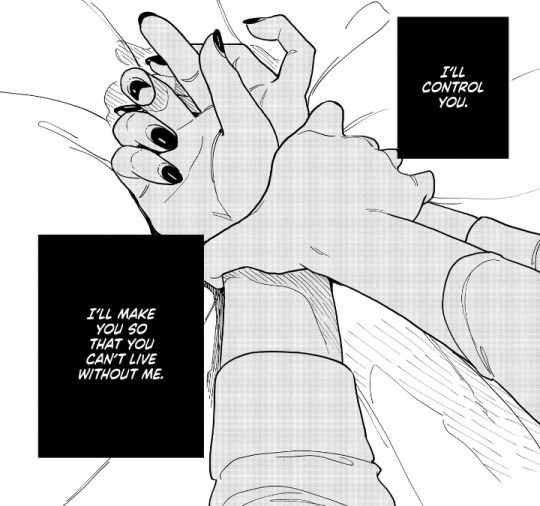
#manga#mangacap#aesthetic#manga aesthetic#mangacaps#manga panel#yuri#so do you wanna go out or#how do we relationship#yuri manga#tsukiatte agetemo i kana#toxic yuri?#black and white#aesthetics#romance
4K notes
·
View notes
Text
i just bought yuri manga in japanese from a japanese website. no its not because she's been reading this same yuri manga in japanese. why do you ask
#aliceposting#i mean its been a while but shes making me want to get back to reading in japanese#super rusty but you gotta learn the hard way#you just gotta read#and listen but idk what to listen to. hm#the manga is#tsukiatte agetemo ii kana#its v good
3 notes
·
View notes
Text
Need
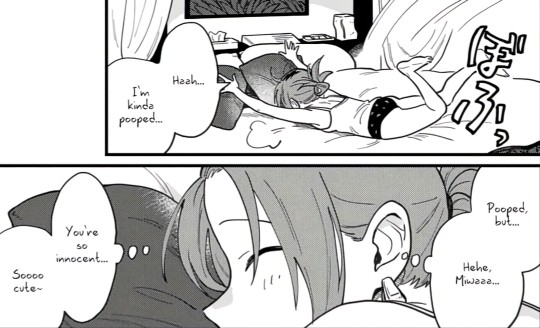

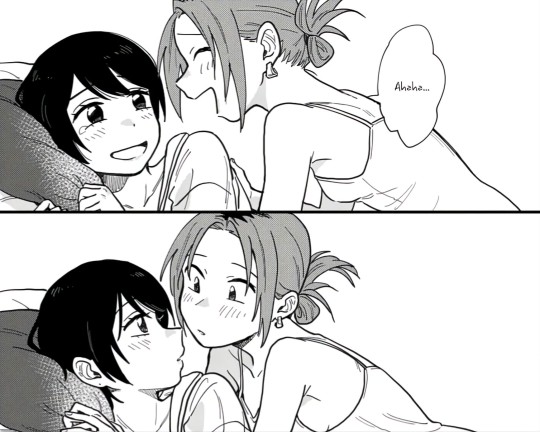

#How Do We Relationship?#Tsukiatte Agetemo Ii kana#Miwa Inuzuka#Saeko Sawatari#Manga#Greyscale#Yuri#Long Hair#Short Hair#needy posting#needy#i just think it would be really neat if a pretty woman controlled all my thoughts and emotions#girlfail lesbian#lesbian
3K notes
·
View notes
Text
47news interview with Tamifull
Earlier this month Tamifull, the author of Tsukiatte agetemo ii kana? AKA How Do We Relationship?, did an interview with 47news. I've translated the full text below:
Out of the innumerable manga published every year, there are always a few titles that one simply can't afford to miss. Tamifull-sensei's How Do We Relationship? (Shogakukan) is one of these. It's a story of young love and heartbreak, centering on college students Inuzuka Miwa and Sawatari Saeko. Though fiction, it has a powerful sense of reality that leaves one feeling as if the real Miwa and Saeko might just be out there somewhere right now. If Agasawa Tea's Ramparts of Ice (Shueisha) is the pinnacle of high school romance, then How Do We Relationship? is the pinnacle of college romance. With the help of supervising editor Watanabe Saori-san, we were able to secure an interview with Tamifull-sensei to discuss the story--now on its 12th volume, and at the height of its climax.
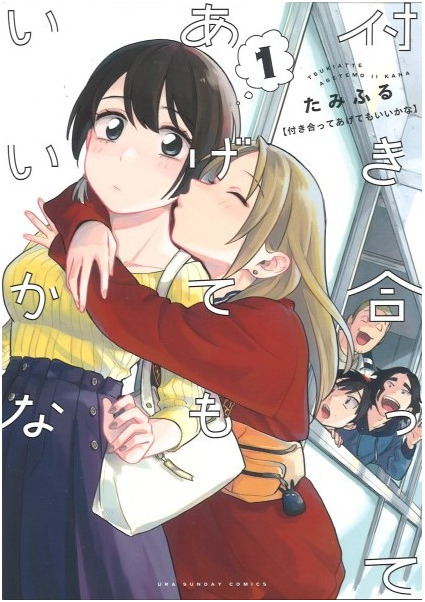
The story so far:
Soon after starting college, mild-mannered beauty Inuzuka Miwa joins the light music club and finds herself the center of attention from the boys at the welcoming party. Miwa, who "only likes girls", is rescued from the situation by the energetic Saeko. Saeko, who "prefers women (to men)", buoyed by liquid courage, asks Miwa out on the spot and the two begin dating. But the two are clumsy and inexperienced with love, and fail to be fully honest with each other. By the end of the year, their romance has ended in disaster. After maintaining a sex-only relationship for some time they return to being friends and even move on to new partners... Finally, as their respective relationships have both ended, the two look at each other anew, not as lovers, but as exes, and as absolute allies.
47: How Do We Relationship? has a very unusual structure. Shoujo manga tend to portray a dramatic path to the start of the relationship, but Miwa and Saeko begin dating at the very start of volume 1 and break up in volume 4. As we're now on volume 12, they've actually been exes longer than they were together.
Tamifull: Well, it has stretched a little longer than I expected (laughs), but the story is proceeding as planned from the start. I think rather than starting decisively with some sort of "All right, I'm falling in love now!" moment, real love tends to build up out of small things over time. I didn't want the relationships in How Do We Relationship? to start in this exaggerated, romance story kind of way.
47: And that helps with its sense of reality.
Tamifull: I don't believe dating and breaking up are things that we need to think about in such dramatic terms. It's easy to feel like every relationship has to be perfect, or that you need to have some sort of fated encounter, or that breaking up is a bad thing, something hopeless. Why shouldn't there be manga that throws away those stereotypes? Life is so much longer than a single relationship. It keeps going after you start dating someone, or break up with them. I think that's a message that I've consistently tried to tell with this manga.
47: Can you tell us how it got to be serialized?
Tamifull: It started out as a oneshot I did for Comitia (a doujin festival and marketplace in Tokyo) in 2017. Up until then, I had mainly been drawing yuri--manga about relationships between girls. And I wanted to tell a little bit of a different story at that event. Doujinshi are generally about 20 pages, so usually you introduce the main couple, have them confess, and wrap it up right around there. So I thought, what if they're already in a relationship and we watch them break up? I was basically thinking, "why not draw what I want to read!?"
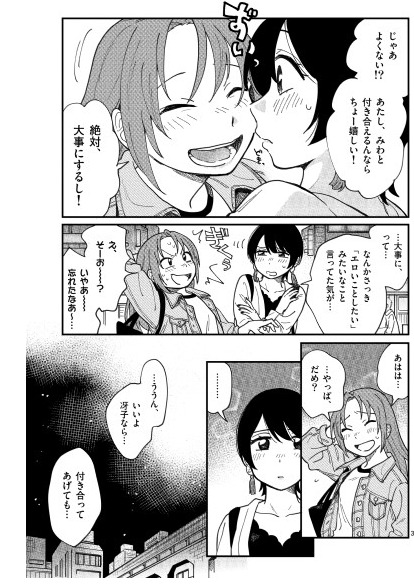
Watanabe: Ashima Yuki-san, one of the first freelance editors, reached out to Tamifull-san then.
47: At the time, yuri was considered a pretty small market. It felt like unless you got into one of the specialized publications you'd have a very hard time, right?
Tamifull: That's true. There are a lot more varied works coming out now. At the time most of these stories were actually aimed at men, so the relationships would stay platonic, or at most they might kiss. I knew stories like that were easier to market and less likely to ruffle feathers, but I found myself thinking, "If we all settle for that, we'll never get to see what happens next! If no one else is drawing it, why shouldn't I?"
47: What did Ashima-san say to you?
Tamifull: She told me, "I've been wanting to read a story where the characters and relationship feel free like this". I do remember thinking it might be more marketable without the eroticism when I was developing it for serialization (laughs). But I ended up just being like, well, let's see what happens!
47: "Realistic" LGBTQ romance stories tend to end up falling into a handful of patterns. Whether it's manga or movies, you see a lot of stories that feel like "the tragedy of same-sex love", or that seem intended to make you feel sorry for the characters. Like the audience is meant to walk away thinking, "How thought-provoking! I really learned something". But How Do We Relationship? is pretty different, isn't it?
Tamifull: Rather than being "yuri" or being viewed as an "LGBTQ story", I want people to get into the story just because they see it and go "Hey, there's girls dating in here!". Sexual minorities aren't here to be instructional materials for anyone. LGBTQ people live in the same world as everyone else. I want the characters to seem like people you might meet anywhere, and to have relationships you might see anywhere. I want the fact that the relationship isn't heterosexual to just be a detail. That's why Watanabe-san and I decided not to advertise How Do We Relationship? specifically as a yuri manga.
47: Achieving that sense of reality must take a lot of care. I imagine you have to be careful to avoid the set phrases and compositions that readers see all the time in romance manga.
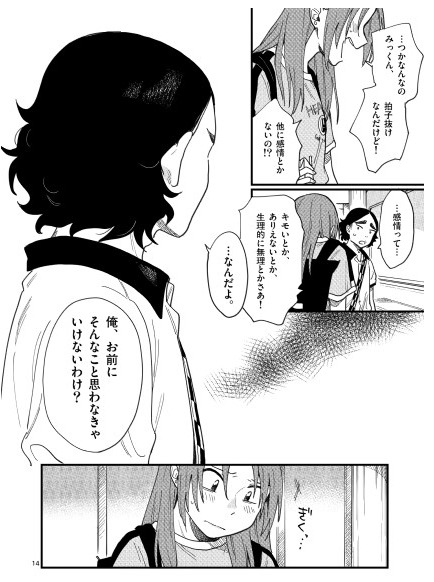
Tamifull: That's true. For example, in the scene where Saeko opens up to Mikkun, their male friend, about her dating Miwa, she asks him if he finds the two of them dating "gross, or wrong, or unnatural", and Mikkun, while looking away, asks in return, "What? Do I have to feel that way about you?". The orthodox move would be to have the handsome guy character looking straight out of the page, smoothly delivering some cool line. But in real life we don't have convenient handsome guys just lying around, and you're not usually looking people straight in the eye. It's not that staged. I think the casual nature of the lines, and the casual nature of the situation, actually make it all the more resonant. I want to keep that natural feeling to the story, and I go out of my way to avoid making it feel "romantic". I think my ideal is for it to feel like a movie.
47: A movie?
Tamifull: That's right. I think one of the strengths of film is the ability to show the drama of everyday life. I always include backgrounds in my panels to try to get closer to that feeling. For instance, in a scene in volume 12, Saeko is on a boat at night looking out over the water with her girlfriend, Yuria. They're talking about breaking up. It's a very romantic setting, but the painful nature of their conversation blots out everything except for the blackness of the water. I want readers to feel like they're there experiencing it alongside the characters.
47: I see. The city you see at night while breaking up with someone certainly does feel different...
Watanabe: And Tamifull-sensei's art has really helped deliver that sense of reality to readers. There are no wasted panels: from the camera placement to how the viewer's eye is led, even the placement of the dialogue, everything serves to guide the reader to what she's showing. Due to my job I read a lot of manga, but there are very few manga artists as skilled as her.
47: Personally, as a reader, it's that sense of reality that has me praying for Saeko and Miwa to end up happy, so next I'd like to ask a little about about how you learned to imbue your writing with such reality, and what techniques you use.
Tamifull: I'll do my best (laughs).
47: First, the depth and internality of your characters. For instance, after breaking up with Saeko, Miwa dates the younger Tamaki. Tamaki is reserved and very low-energy. She's clearly at a loss with the more sexually-motivated Miwa, but nonetheless does her best to reciprocate in her own way. She's straightforward and can be a little childish, but has an intellectual side to her, as well. Accurately portraying such a complex, difficult character must necessitate having an incredibly keen eye for people. How did you learn to understand other people so well?
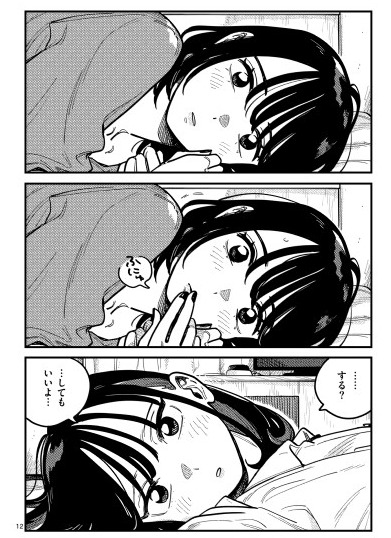
Tamifull: I think it was mostly my experience in school. In primary and middle school I was low on the pecking order, so I became very sensitive to other people's hostility.
47: Ah, the pecking order... That does happen, doesn't it.
Tamifull: Yes. I'd be in a group of maybe 5 or 6 friends in a class and then once every few months I'd get the silent treatment and end up being ostracized from the group, in this sort of rotation. I'd go through 2 or 3 groups and it would always happen. I think all the time I spent thinking about how to avoid being targeted like that played a big part.
47: Planning out the battle to make it out alive, so to speak.
Tamifull: I think that really helped cultivate my eye (laughs). Like, this girl's the ringleader, and these ones are joining in because they don't want to become the target themselves, but this other girl is actually nice so even when they're ganging up on me she won't join in.
47: I see. Even while you were being mistreated, you were trying to understand things from their perspective. Certainly How Do We Relationship? doesn't have any one character that you would really call a villain.
Tamifull: That's right. Take Kan, who tells Miwa "I hate you" in volume 2, or Tamaki's friend Nagi who calls her "gross" in volume 8. I think it would be too convenient if nobody was ever mean or unpleasant, so it's important to have such characters. But I also try to portray them as having their own reasons. It's not like everyone will be good to each other all the time, but for each person, there's a community out there somewhere that will accept them as themselves. I'm always including that idea, that wish, almost, as I write the various members of the music club.
47: The story has this warmth to it you can really feel, and I think that idea has a lot to do with it. That said, it sounds like you weren't always successful at avoiding bullying. That must have been difficult.
Tamifull: I spent a lot of time wrapped in my futon wondering, why do they treat me like that? As the days went by I'd end up sublimating my anger and frustration by telling myself, "They have their own problems so there's nothing I can do about it." Like, this girl might have a lot of stress at home, about her grades or other things, so she just feels too much pressure and gets pushed into bullying, or things like that. I really got in the habit of thinking about things from their perspective.
47: You are an incredibly kind person. I do think the eye you cultivated that way serves you well in writing characters. For example, in volume 3, we meet Miwa's first crush, Shiho. At home, we see Shiho being horribly mistreated by her parents, who only care for her more academically-minded younger sister, Maho. One day Maho snaps at her, saying "Don't talk back to me, moron! You know how much I have to carry thanks to your stupidity!?". But Shiho just accepts it, and keeps her unhappiness to herself. That's in volume 11, that we finally find out how Maho, who's caused Shiho so much pain, has been feeling.
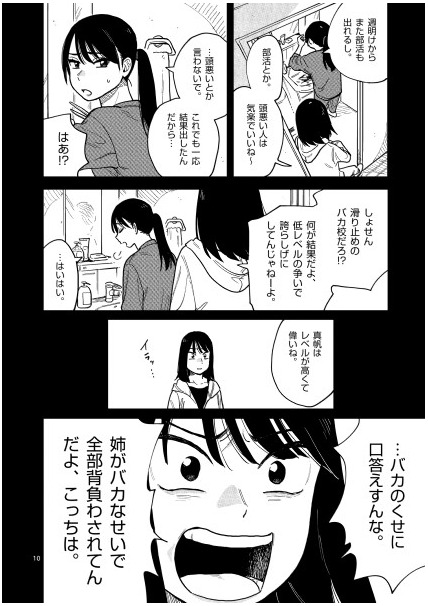
Tamifull: Maho also feels a lot of pressure from their parents, and she's desperate not to fail. She's under a lot of stress from that. When they were younger, Shiho and Maho were actually very close--Maho loved her older sister--but as grades and examinations started to get involved that connection became twisted... I wasn't able to show all of this in the story, but I always think through these details before drawing.
47: That sort of thing does happen between siblings, doesn't it... Just remembering is a little painful.
Tamifull: But, as much as I analyze people like this, it's very difficult to put into words.
47: In what way?
Tamifull: If you say "Well, this person has this kind of background, so that's why they do these things" then everyone will be like, "And what do you know about them?". You'll end up hurting feelings. So I can't say it about real people, but with How Do We Relationship? I'm the author so I can draw whatever I want. When I hear readers talk about the "realism" I'm always like, "Really? You mean I actually did it?". I secretly get a little happy about it (laughs).
47: Did you always want to become a mangaka, growing up?
Tamifull: I did always like drawing. But when I was pretty young I read one of those "So you want to draw manga?" kind of books and I got very intimidated by all the different erasers and tones and things, and I sort of gave up (laughs). It wasn't until I'd completely retired from extracurriculars in college that I realized I didn't have enough to do and started drawing manga.
47: And then you became a mangaka as soon as you graduated?
Tamifull: Yes, that's right.
47: That's quite something. Not many people manage to do that, right?
Tamifull: The reason I started attending Comitia was because in college I finally learned that editors would be there. Up until then I was working with my childhood knowledge--I thought I had to submit my work to a company and then become an assistant before I could become an author myself. When I found out I was like, "Doujinshi will get me fans and even expose me to editors? What could be better!?". I had my heart set on it.
47: (laughs). What kinds of things were you inspired by when you were a child?
Tamifull: All the way through school I was into stuff that was a little different from whatever was in fashion. I liked watching slightly older anime on Kids' Station, for instance. Like, look at me! I'm not into the same stuff as everybody else! Aren't I cool? (laughs).
47: (laughs).
Tamifull: When everyone else was into Cardcaptor Sakura, I was watching Takahashi Rumiko-sensei's Ranma 1/2 and Maison Ikkoku. I remember when I read one of Ito Junji-sensei's works at a relative's house it left a big impression on me. When I was in college I bought the collector's edition of Tomie at Village Vanguard.
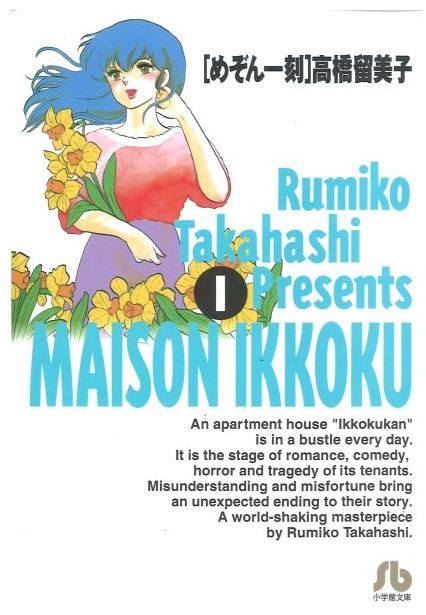
47: You grew up into a bit of an alt college student.
Tamifull: In college, going to Village Vanguard and fishing for manga nobody else had became something of a passion for me.
47: What about Takahashi Rumiko-sensei's work did you like in particular?
Tamifull: I especially liked the way she drew girls. In the early 2000s, when I was in primary school, it was very in fashion for girls to be drawn very slender and light, with delicate limbs.
47: Slenderness was certainly emphasized a lot back then, yes.
Tamifull: I preferred how Rumiko-sensei drew them--a little squishy. As far as the story goes, I loved the ending of Maison Ikkoku, how it portrays the characters moving forward in life. I read it over and over. I think that passion for people comes through a little in How Do We Relationship?.
47: In the afterword of volume 3, you mentioned that from middle school until about halfway through college you lost interest in manga, and were more into drama and music.
Tamifull: That's true. Sometimes I'd draw a buff Pikachu or something on the blackboard to try to get a laugh out of people, but that was about it.
47: A buff Pikachu? (laughs). I wish I could see it.
Tamifull: At co-ed schools I think girls mostly end up ranked by looks, but I went to an all-girls high school, so... It was really about who was the funniest.
47: So art was a way of giving yourself a gimmick.
Tamifull: That's right. That continued into college, so I always had the position of somebody who's just a little bit good at drawing. In college everyone was nice, though.
47: In that same afterword you mentioned that during the time you weren't drawing manga, you really enjoyed making things together with a group.
Tamifull: In high school I was in the school band, and we'd all put on plays together at school festivals. I joined the light music club in college. I did percussion in high school so I mostly played drums, or did vocals.
47: Oooh. What kinds of things did you play in the light music club?
Tamifull: Just normal rock. Popular stuff, like Go! Go! 7188.
47: I have an impression of you as being a little bit countercultural, so rock seems perfect for you (laughs).
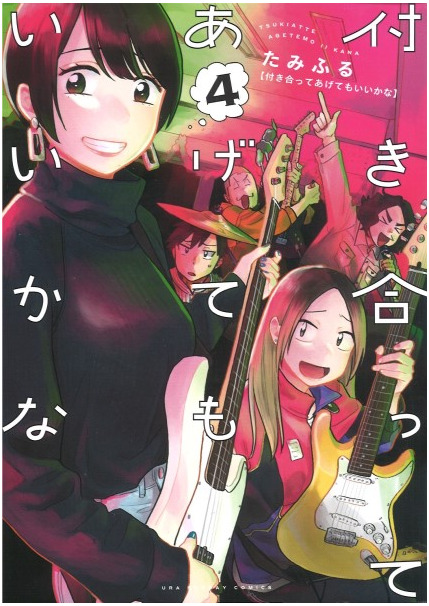
Tamifull: In college I was also on the student festival committee, so I was doing double duty a little bit. And as much as I enjoyed making things with other people, I started to feel this hole open up, like inside I'd be thinking "I could do this so much better...". Then I started looking into manga again on a whim and realized everything had gone digital. You don't need to hire a bunch of assistants, and you can do tones with the press of a button. It was like this new environment where I could try my hand at manga by myself was prepared just in time as I came of age. I didn't have to hold myself back for anyone, and could do everything just how I wanted. That's why I've always worked alone.
47: What!? You don't have any assistants even now?
Tamifull: I don't.
47: Watanabe-san, is that normal?
Watanabe: It's extremely precious to us. She's really something, isn't she? I don't know how she puts out so much in just two weeks.
Tamifull: I want every angle and composition just so. I can't really express it well, so when I think about trying to explain it to someone else, I just feel like it would end up taking even more time... But then sometimes I'll be working from my storyboards and I'll be like, "Why did I make myself draw it like this!?" and end up suffering a little (laughs).
47: It's certainly a work that cuts no corners. The dialogue is always so well written and moving--do you start by writing the characters' lines?
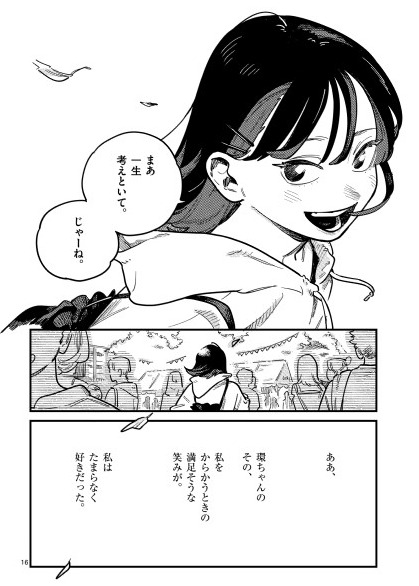
Tamifull: Yes, I do. I'll write them all out at once, then adapt them to the storyboards as I go. I think all the time I spent agonizing in my futon when I was younger like "I should've said this..." or "And then they'd say that..." might also help here.
47: You always include afterword comics and omake in the tankoubon releases, so I get a sense that you're quite particular about manga books.
Tamifull: I love manga that includes a lot of little extras. And I want readers to enjoy How Do We Relationship? as much as possible, so I always go all out drawing them.
47: Your first announced works were around 2012, and in 2014 you made your commercial debut with Don't Call me a Goddess! in Bungeisha's 4-koma magazine Manga Time. The main character, Saotome-san, is a bit of a tryhard, and as much as that wins her respect from her peers, it also tends to alienate them. Into her life barrels the far less inhibited Ryou. After that, you had My Little Sister and the Sex Doll (Shueisha) serialized in Tonari no Young Jump, about an innocent and naive high school girl and a talking sex doll. Both manga were comedies.
Tamifull: How Do We Relationship? was a little bit of a break in genre, yes (laughs). My Little Sister and the Sex Doll also started as something I made as a change of pace for Comitia (laughs).
47: It's a very rhythmical work--the talking sex doll's lines are incredibly well crafted.
Tamifull: The editors at Young Jump really liked it. It was a little more crude than what I usually write, so I did have some doubts... but they were very kind in offering me the serialization. I had to exercise my vocabulary to the fullest.
47: As much as it made me laugh, I could also somehow feel your desire to break taboos coming through.
Tamifull: That's true. I was trying to make fun of dirty comics, while making a dirty comic (laughs). Even when there would be the setup for some sort of fanservice scene, with something sexual happening to the girl, I would always interrupt it with a joke and turn it into something decidedly not fanservice.
47: On the other hand, something about the relationship between Saotome-san and Ryou in Don't Call Me a Goddess! feels like it connects to Miwa and Saeko. Are you particularly fond of that sort of relationship?
Tamifull: Honestly, that was... completely unintentional. I think, when it comes to protagonists, I do like a character who is quiet, but unexpectedly stubborn... When I think about my time in school, I had a lot of experiences where there would be another girl, and she'd have this sense of separation, like a bit of a boundary around herself, but when I approached her she'd turn out to actually be really interesting. And I'd have this feeling of "Everyone else doesn't even know how cool she is!? I need to let everyone know!". I think that feeling, almost like wanting to become a producer for girls like that, has led me to write my protagonists that way.
47: You really love girls.
Tamifull: I may have spent long years in fierce battle with them at school, but when I translate it to manga they become strangely appealing. Even when they're a pain, their being a pain is good in of itself (laughs). It's true that characters who aren't straightforward can make a story more interesting, but I also think that's just how people are--you can't sum anyone up in a few words. Don't you agree?
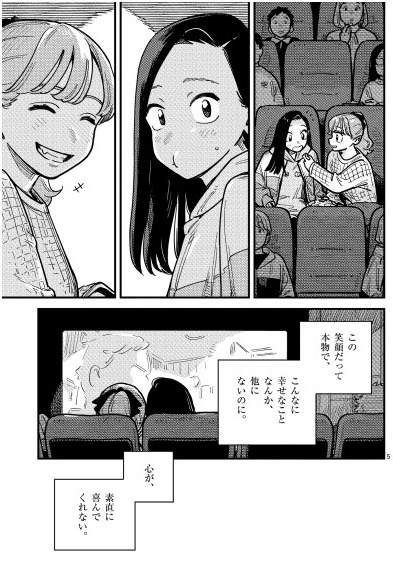
47: Your manga, including How Do We Relationship?, really don't tend to have characters that you can sum up as "the cool one" or "the tsundere" or anything like that.
Tamifull: That's right. I don't want them to be symbols.
47: And that's exactly why, in each case--Saeko and Miwa, Miwa and Tamaki, Saeko and Yuria--when they break up, it's so emotionally impactful. You can't just point at one of them and say, "It's her fault."
Tamifull: Right. In reality, lots of people break up all the time without either one really being at fault. It makes me really happy to hear that people read the story as just being how things ended up for them. It's so easy to assume that when a relationship falls apart, it's because someone's in the wrong. I worked very hard to make sure that Tamaki and Yuria would be charming enough characters for readers to like them, and to accept it when I made them break up with Miwa and Saeko. I always look at readers' reactions and think carefully about how to proceed.
47: How Do We Relationship? really feels like you want to closely examine real, "normal" relationships.
Tamifull: I think it's a pity for the socially accepted image of love to be something so narrow. When two women date, and after breaking up return to being friends, I think people have a tendency to look a little askance at them. But why is that? I always find myself thinking, "Are you okay with living like that?". With How Do We Relationship?, I wanted to create a world where Miwa and Saeko and everyone else's desires wouldn't be crushed by those around them.
47: Especially during the first 3 volumes, you often shine the spotlight on the other characters around Miwa and Saeko. Is that also a part of fleshing out that view of the world?
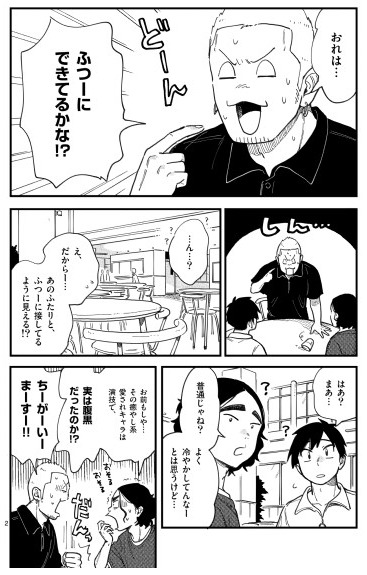
Tamifull: Something like that. I don't want the idea of someone who likes the same sex to be something fantastical. I want to show that sexual minorities are all around--even around you. I want heterosexual readers to also get into the story, and I was very conscious of that early on in the serialization. I think whether you're gay or straight, you can still understand this story. These characters are just like you. That's the message I've tried to send.
47: It would be really wonderful if we could become a society where everyone views each other with respect. What would that take, I wonder?
Tamifull: Delusions, maybe.
47: Delusions? (laughs).
Tamifull: Yes (laughs). This is just my own experience, but when I meet someone and feel off-put by them, I always thoroughly imagine their background. By the time I'm finished whatever anger I felt has faded, and I feel ready to treat them better--maybe even to become close with them. And if you write stories you can come up with great material this way, so it's two birds with one stone (laughs).
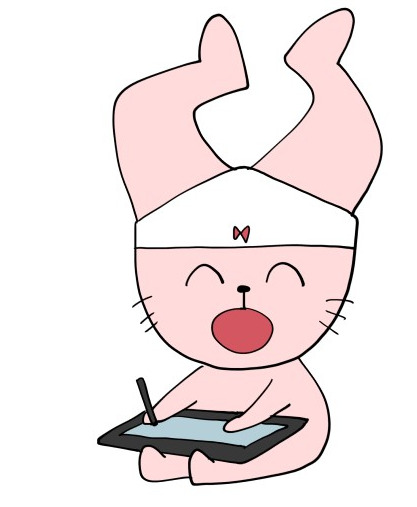
253 notes
·
View notes
Note
DUDE PLEASE RECOMMEND YURI MANGA!!!
In all honesty, I have more on my to-read list than I've actually completed, but I can tell you some off the top of my head that I've enjoyed.
- Kakeochi Girl (ENG: Run Away With Me, Girl) CW: domestic abuse, infidelity, pregnancy. It does have a happy ending though! The journey's pretty heavy, but incredibly emotional and interesting. Definitely worth the read.
- Inkya Gyaru demo Ikigaritai! (ENG: Even the Introverted Gals Wanna Get Out There!) This is a slice of life one about two girlfriends who run a subculture club at their school, and their efforts to keep the club (their little paradise) running. It's incredibly funny, and I found both girls very relatable. Their relationship is also so casually sweet. I love how openly they care for each other.
- Kininatteru Hito ga Otoko ja Nakatta (ENG: The Guy She Was Interested in Wasn't a Guy at All) Pretty straightforward premise... girl mistakes an attractive music store employee for a guy and develops a crush. Turns out the employee is a girl. They both catch the feelings. Shenanigans ensue. Now, I'm not caught up on this one yet, but I've definitely enjoyed what I have read so far.
- Watashi no Oshi wa Akuyaku Reijou (ENG: I'm in Love With the Villainess) This one got an anime adaptation recently, so you're probably already familiar. I really love villainess-centric isekais though, and this one just has the added cherry-on-top of being an openly queer story (though there are definitely other lesbian villainess stories on my read list!) Anyway, it's a fun time.
Now, these next ones I haven't read for myself yet, but they seem promising:
- Tamen de Gushi (ENG: SQ: Begin W/Your Name!, ALT: Their Story)
- Tsukiatte Agetemo Ii Kana (ENG: How Do We Relationship?)
- Tsukuritai Onna to Tabetai Onna (ENG: She Loves to Cook, and She Loves to Eat)
(Also, your obligatory 'read Liar Satsuki' message. It's not technically a girls love manga, but the sapphic subtext is... Very prominent)
22 notes
·
View notes
Text
So, Do You Want to Go Out, or...?
^^ Alt name for "How Do We Relationship?"
How Do We Relationship? 🤝 Yuri is My Job!


"There are no actual set rules on relationships, and attempting to force your relationship to conform to an idealized version of 'romance' instead of figuring out what works for you and your partner will cause you both great heartache in the long run"
Alternatively:
"Our writers are going to beat you to death (emotionally) and will not stop no matter how much you beg. You will grow to enjoy the pain before long..."
#how do we relationship?#yuri is my job!#yuri is my job#watayuri#how do we relationship#tsukiatte agetemo iikana#yuri#yuri recommendation#yuri recs#yuri rec#anime/manga#anime / manga#anime / manga i want to get into#anime/manga i want to get into#shoujo ai manga#shoujo ai#gl#gl manga#girl's love#girls' love#girls love#付き合ってあげてもいいかな#Tsukiatte agete mo ii kana#私の百合はお仕事です!#Schwestern in Liebe!#Watashi no Yuri wa Oshigoto desu!
237 notes
·
View notes
Text
The Stuff I Read in September 2023
Stuff I Extra Liked Is Bold
Books
Orphans of the Sky, Robert A. Heinlein
Starship Troopers, Robert A. Heinlein
Revenant Gun, Yoon Ha Lee
All Systems Red, Martha Wells
Artificial Condition, Martha Wells
Rogue Protocol, Martha Wells
Exit Strategy, Martha Wells
Friendship Poems, ed. Peter Washington
Introduction to Linear Algebra, ch. 1-3, Gilbert Strang
Manga (mostly yuri [really all yuri])
Yagate Kimi ni Naru / Bloom Into You, Nio Nakatani
Kaketa Tsuki to Dōnattsu / Doughnuts Under a Crescent Moon, Shio Usui
Onna Tomodachi to Kekkon Shitemita / Trying Out Marriage With My Female Friend, Shio Usui
Kimi no Tame ni Sekai wa Aru / The World Exists for You, Shio Usui
Teiji ni Agaretara / If We Leave on the Dot, Ayu Inui
Nikurashii Hodo Aishiteru / I Love You So Much I Hate You, Ayu Inui
Tsukiatte Agetemo Ī Kana / How Do We Relationship? Tamifull
Himegoto - Juukyuusai no Seifuku / Uniforms at the Age of Nineteen, Ryou Minenami
Colorless Girl, Honami Shirono
Short Fiction
It gets so lonely here, ebi-hime [itch.io]
Aye, and Gomorrah, Samuel R. Delaney [strange horizons]
Evolutionary Game Theory
Red Queen and Red King Effects in cultural agent-based modeling: Hawk Dove Binary and Systemic Discrimination, S. M. Amadae & Christopher J. Watts [doi]
The Evolution of Social Norms, H. Peyton Young [doi]
The Checkerboard Model of Social Interaction, James Sakoda [doi]
Dynamic Models of Segregation, Thomas C. Schelling [doi]
Towards a Unified Science of Cultural Evolution, Alex Mesoudi, Andrew Whiten, Kevin N. Laland [doi]
Is Human Cultural Evolution Darwinian? Alex Mesoudi, Andrew Whiten, Kevin N. Laland [doi]
Gender/Sexuality/Queer Stuff (up to several degrees removed)
Re-orienting Desire: The Gay International and the Arab World, Joseph Massad [link]
The Empire of Sexuality, Joseph Massad (interview) [link]
The Bare Bones of Sex, Anne Fausto-Sterling [jstor]
On the Biology of Sexed Subjects, Helen Keane & Marsha Rosengarten [doi]
Vacation Cruises: Or, the Homoerotics of Orientalism, Joseph A. Boone [jstor]
Romancing the Transgender Native: Rethinking the Use of the “Third Gender” Concept, Evan B. Towle & Lynn M. Morgan [doi]
Scientific Racism and the Emergence of the Homosexual Body, Siobhan Somerville [jstor]
White Sexual Imperialism: A Theory of Asian Feminist Jurisprudence, Sunny Woan [link]
Haunted by the 1990s: Queer Theory’s Affective Histories, Kadji Amin [jstor]
Annoying Anthro
The Sexual Division of Labor, Rebecca B. Bird, Brian F. Codding [researchgate]
Factors in the Division of Labor by Sex: A Cross-Cultural Analysis, George P. Murdock & Caterina Provost [jstor]
Biosocial Construction of Sex Differences and Similarities in Behavior, Wendy Wood & Alice H. Eagly [doi]
Political Theory
Some critics argue that the Internal Colony Theory is outdated. Here’s why they’re wrong, Patrick D. Anderson [link]
Toward a New Theory of Internal Colonialism, Charles Pinderhughes [link]
The Anatomy of Iranian Racism: Reflections on the Root Causes of South Azerbaijans Resistance Movement, Alireza Asgharzadeh [link]
The veil or a brother's life: French manipulations of Muslim women's images during the Algerian War, 1954–62, Elizabeth Perego [doi]
A Difficulty in the Concept of Social Welfare, Kenneth J. Arrow [jstor]
Manipulation of Voting Schemes: A General Result, Allan Gibbard [jstor]
China Has Billionaires, Roderic Day [redsails]
Other
Conversations I Can't Have, Cassandra Byers Harvin [proquest]
Earth system impacts of the European arrival and Great Dying in the Americas after 1492, Alexander Koch et al. [doi]
Why prisons are not “The New Asylums”, Liat Ben-Moshe [doi]
Uses of Value Judgments in Science: A General Argument, with Lessons from a Case Study of Feminist Research on Divorce, Elizabeth Anderson [doi]
Boundary Issues, Lily Scherlis [link]
#reading prog#can you tell i've been depression-reading yuri#these categories are so janky a lot of the yuri is technically short fiction the murderbot series is novelettes etc. etc.#also murderbot is yuri
14 notes
·
View notes
Text
i need to make a habit of checking original japanese titles bc i know enough to translate tsukiatte agetemo ii kana but i didn't know THAT'S WHAT IT WAS CALLED and assumed how do we relationship was an apt translation
4 notes
·
View notes
Text
miwa and saeko... yall are not doing ok are you
#god that one panel? with saeko holding miwa's chin?#in no way a healthy relationship but. the character building. the new relationships. the. women#same vibes as that one weird extra chapter#i feel so bad for mirai getting caught in the middle of this#how do we relationship?#how do we relationship#so do you wanna go out or#manga#wlw#Tsukiatte Agetemo Ii kana#saeko#miwa#rambles
40 notes
·
View notes
Text
Week 2: October 12 - 18
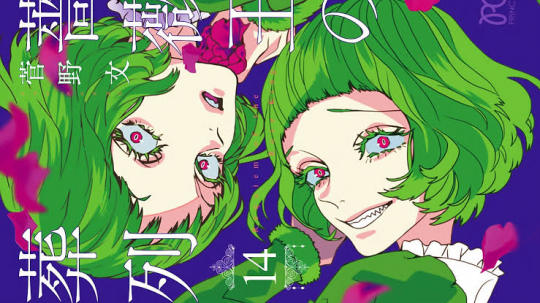
Anime Releases
Ginban Kishi (Knight of the Ice) Vol.7
Jibaku Shounen Hanako-kun (Toilet-Bound Hanako-kun) Vol.10
Kami-tachi ni Hirowareta Otoko (By the Grace of the Gods) Vol.3
Komi-san wa, Comyushou desu. (Komi Can't Communicate) Vol.15
Konohana Kitan Vol.10
Mahou Shoujo Tokushusen Asuka (Magical Girl Special Ops Asuka) Vol.12
Nokemono-tachi no Yoru (The Tale of the Outcasts) Vol.3
Non Non Biyori Vol.15
Pocket Monsters Special (Pokémon Adventures) Collector's Edition Omnibus Vol.10 [incl. Vol.28-29]
Satsuriku no Tenshi (Angels of Death) Vol.12
Scoop Musou: "Scoop Hadouhou!" ( `・ω・´)♂〓〓〓〓★(゜Д ゜ ;;;).:∴ Dogooo (The Invincible Shovel) Vol.2
Shiawase Kanako no Koroshiya Seikatsu (Happy Kanako's Killer Life) Vol.2
Shuumatsu no Harem (World's End Harem) Vol.12
Tenkuu Shinpan (High-Rise Invasion) Vol.19-21
Tsukiatte Agetemo Ii kana (How Do We Relationship?) Vol.4
Yakumo-san wa Ezuke ga Shitai. (Beauty and the Feast) Vol.2
Yofukashi no Uta (Call of the Night) Vol.4
Zannen Onna Kanbu Black General-san (Precarious Woman Executive Miss Black General) Vol.7
Akuyaku Reijou nanode Last Boss wo Kattemimashita (I'm the Villainess, So I'm Taming the Final Boss) Vol.1 [Light Novel]
Fushisha no Deshi: Jashin no Fukyou wo Katte Naraku ni Otosareta Ore no Eiyuutan (Disciple of the Lich: Or How I Was Cursed By the Gods and Dropped into the Abyss) Vol.1 [Light Novel]
Kimi to Boku no Saigo no Senjou, Aruiwa Sekai ga Hajimaru Seisen Our Last Crusade or the Rise of a New World Vol.7 [Light Novel]
Kuitsume Youhei no Gensou Kitan (The Strange Adventure of a Broke Mercenary) Vol.2 [Light Novel]
Seiken Gakuin no Makentsukai (The Demon Sword Master of Excalibur Academy) Vol.4 [Light Novel]
Sekai Saikou no Ansatsusha, Isekai Kizoku ni Tensei suru (The World's Finest Assassin Gets Reincarnated in Another World as an Aristocrat) Vol.3 [Light Novel]
Shin no Nakama ja Nai to Yuusha no Party wo Oidasareta node, Henkyou de Slow Life suru Koto ni Shimashita (Banished from the Hero's Party, I Decided to Live a Quiet Life in the Countryside) Vol.4 [Light Novel]
Tensei shitara Ken deshita (Reincarnated as a Sword) Vol.9 [Light Novel]
Digital Releases
Atashi no Pink ga Afurechau (My Pink Is Overflowing) Vol.5
Giant Killing Vol.27
Hakozume: Koban Joshi no Gyakushuu (Police in a Pod) Vol.5
Karada, Kasanete, Kasanatte (Our Bodies, Entwining, Entwined) Vol.1
Motokare Mania (Ex-Enthusiasts: MotoKare Mania) Vol.6
Nami yo Kiitekure (Wave, Listen to Me!) Vol.7
Perfect World Vol.8
Shoukoku no Altair (Altair: A Record of Battles) Vol.24
Uchuu Kyoudai (Space Brothers) Vol.39
Yamaguchi-kun wa Warukunai (Yamaguchi-kun Isn't So Bad) Vol.3
Ansatsusha de Aru Ore no Status ga Yuusha yori mo Akiraka ni Tsuyoi no da ga
16 notes
·
View notes
Note
Do you have any Yuri recommendations, manga or anime?
not really unfortunately... I feel like I tend to watch more things that aren't actually yuri and then only get invested in lesbian ships
but bright and cheery amnesia is cute and tsukiatte agetemo ii kana/how do we relationship is also good. that one's college girls
7 notes
·
View notes